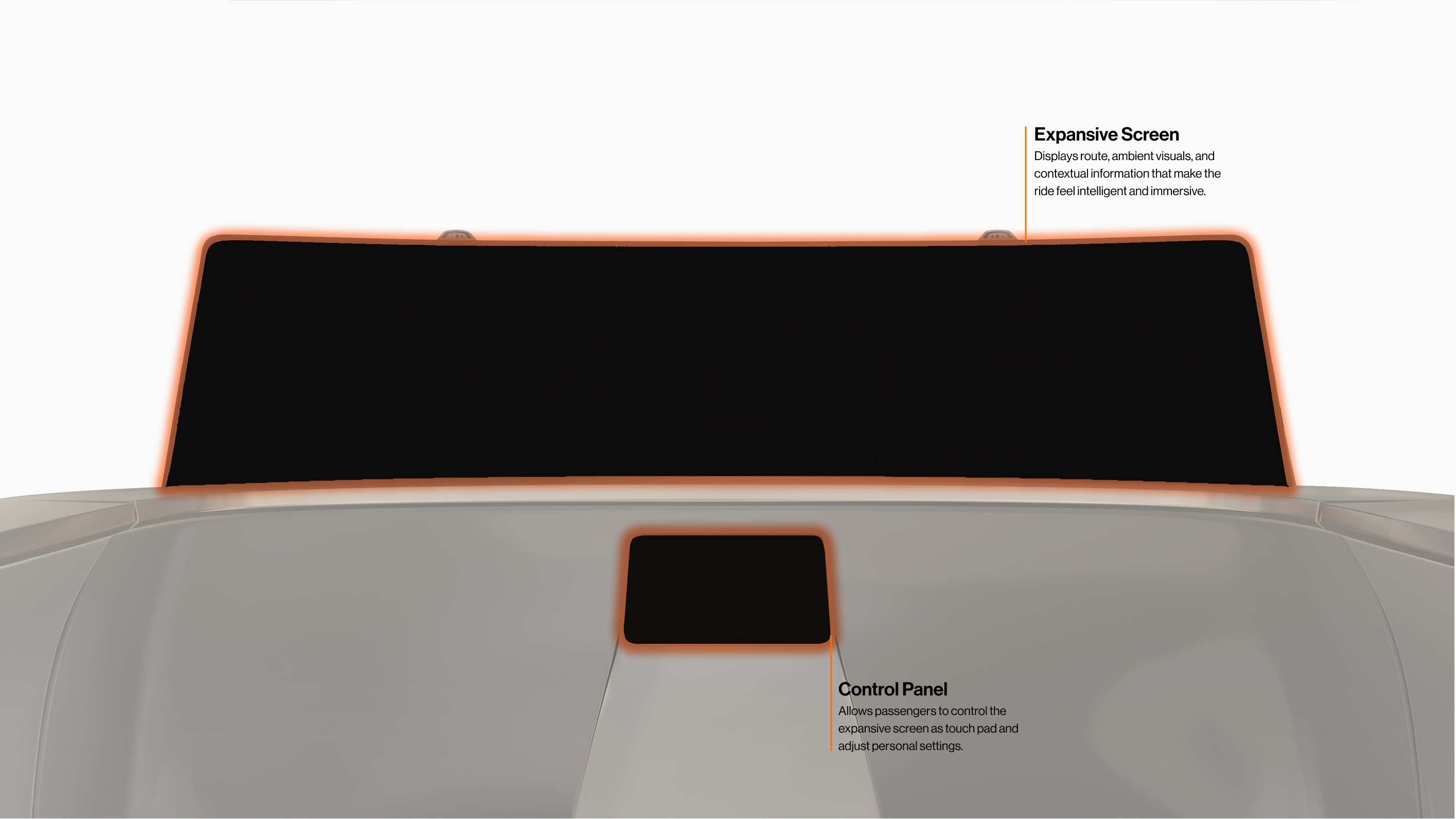



From the moment the ride begins, passengers are greeted with a route visualization on the screen. Passengers can modify their route at any point and enabling spontaneous detours or added stops.
As the vehicle approaches its destination, the system proactively prompts the user to confirm or adjust the exact drop-off point, mimicking the natural dialogue of a human driver. This approach blends autonomy with user agency, offering both confidence and comfort in dynamic urban environments.
In broad or complex areas—such as commercial districts or large malls—precise addresses are often unknown or unhelpful. This feature enables passengers to engage with the AI mid-journey using natural language to refine or discover their destination. For instance, a user might say, “Show us some Korean restaurants near the church with a rating above 4.7,” and receive curated options directly on the display.
Rather than relying on pre-set locations, the system responds dynamically—adapting the route and offering intelligent suggestions based on real-time context, group preferences, and intent-rich voice commands. This transforms passive navigation into a collaborative experience, empowering flexible and spontaneous trip planning.
In dense urban settings like Los Angeles—where curbside pickups, airport terminals, or temporary loading zones demand precision—the robotaxi enables passengers to give natural, scene-based parking instructions. Using a shared visual interface, the system aligns with what the user sees.
A command like “Park behind the green car” is understood through real-time scene interpretation, allowing the vehicle to respond safely and accurately. This intuitive, context-aware communication mirrors the flexibility of speaking to a human driver, offering passengers greater control and confidence in complex or changing environments.
To support emotional comfort and cognitive rest during autonomous travel, the robotaxi features an Immersive Mode—a customizable in-cabin experience that transforms the vehicle into a calming, responsive environment. Passengers can select themes like “Forest” or “Valley,” activating synchronized ambient visuals, soundscapes, and mood lighting.
The AI further enhances this by adjusting settings based on user preferences or contextual factors such as time of day. In the absence of a driver, Immersive Mode creates a sense of sanctuary—ideal for unwinding after work, meditating during long commutes, or simply disconnecting during solo rides.
This reimagines the vehicle not just as a means of transportation, but as a personal well-being space.
Although the 2-seat design offers enough comfort for most daily rides, it limits group travel beyond 2 passengers. Our team addressed this by introducing the idea of a convoy system, where multiple robotaxis can travel together — physically and digitally connected. Inspired by off-road convoys moving through the forest, this concept allows users to share a synchronized journey.



Instructors:
Jae S.Min, Trevor Greenleaf
Sponser:
Charles Feng, Head of Design, Didi Chuxing Beijing
Teammates:
Yunran Zhang, Rowan Tuttle, Yixiang Yuan, Qinwen Feng